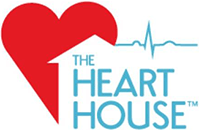Understanding Tortuous Veins
Tortuous veins are often long, knotted, curled, or bulging veins that can be seen protruding under the skin surface. If you have tortuous leg veins, it may be an early warning sign of peripheral artery disease (PAD).
What You Should Know:
Tortuous veins refer to twisted, elongated, and dilated veins that have lost their normal shape and structure. They often develop in the legs because leg veins work against gravity to return blood to the heart. Weakened valves in leg veins allow blood to flow backward and pool in veins, causing twisting, elongation, and enlargement of the veins.
While tortuous veins can develop separately from PAD, there is an overlap of risk factors between the two conditions.
PAD causes the narrowing of the arteries that supply blood to the legs, which increases resistance to blood flow and causes the veins to swell. This venous hypertension and reversal of blood flow contribute to tortuosity and the formation of varicose veins. In addition, those with PAD often have elevated pressure in their leg arteries, which gets transmitted back into the veins. The abnormally high pressure exacerbates valve damage and reflux, promoting twisting and bulging of veins. Tortuous veins may also compress and worsen arterial flow.
Could PAD be Affecting Your Legs?
Take Our Free Online Assessment to Find Out
Peripheral artery disease (PAD) is a common circulatory condition that can lead to leg pain and walking problems. People with PAD are often asymptomatic at the onset of this condition, so early intervention and testing are critical for improving your heart health. Our easy-to-use online self-assessment can help determine if you may be at risk for PAD and if you should schedule a consultation with a vascular specialist to discuss further testing.
Causes & Symptoms
of Tortuous Veins
Tortuous veins typically develop due to faulty valves and weakened vein walls that normally prevent backward blood flow in the legs. When these valves become damaged, blood pools in the veins rather than returning to the heart efficiently. This causes the veins to dilate, elongate, and become twisted.
Some common causes and risk factors for tortuous veins include:
- Aging
- Genetics
- Pregnancy
- Obesity
- Standing for long periods
- High blood pressure
- Leg injuries
- Blood clots
Signs and Symptoms of tortuous veins include:
- Aching, throbbing, pain, burning, or heaviness in the legs
- Leg cramping, especially at night
- Leg swelling or fluid retention
- Itching and tingling skin over the veins
- Visible lumps and raised, knotted veins under the skin
Testing & Diagnosis for
Tortuous Veins?
Patients with tortuous veins should be aware of the connection between peripheral artery disease (PAD) and tortuous veins. The resulting damage to valves and the backward leakage of blood promote tortuous vein formation.
Take our self-assessment to find out if you are at risk for PAD. If PAD is suspected, your physician may order additional testing to provide important information about your vascular health.
Treatment Planning for
Tortuous Veins
Treatment for PAD, including exercise, medications to improve arterial blood flow, and revascularization procedures can help alleviate some venous hypertension that causes tortuous veins. Managing PAD through exercise, medications, and, if needed, revascularization, can help minimize vein abnormalities. Likewise, treating malfunctioning leg veins can alleviate symptoms of PAD. Venous and arterial conditions are closely related, so treating both is an important part of care for PAD patients.
Common treatment options for tortuous veins include:
- Compression stockings are often recommended first to help improve blood flow and reduce swelling. The gentle pressure helps move blood through the veins and decreases dilation. Stockings may be worn daily or prescribed for situational use like long flights or standing.
- Lifestyle changes like exercise, leg elevation, weight loss, and avoiding prolonged standing can also help relieve symptoms of tortuous veins. Treatment aims to redirect blood flow, reduce pressure, and alleviate bulging.
- Endovenous ablation uses heat to collapse and seal off the dysfunctional vein. A catheter delivers thermal energy, most often in the form of radiofrequency, that redirects blood flow to healthier veins.
- Sclerotherapy injects a chemical irritant into the vein, which scars and closes the vein so blood is forced to reroute. Multiple treatments may be needed for success.
- Ligation and stripping involve surgically removing the affected vein altogether. This is more invasive but definitive. The faulty vein is removed through small incisions to eliminate problems with backflow and tortuosity.
- Phlebectomy is the surgical removal of a vein segment through micro-incisions. This minimally invasive method removes twisted vein portions.
Photo Gallery
Video Gallery
Testimonials
Photo Gallery
Risks if Left Untreated
Get To Know Our Cardiovascular Specialists
In Search of Care? Request a Consultation Today





